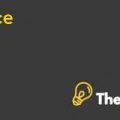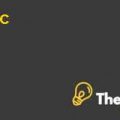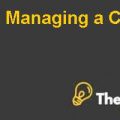Agero: Enhancing Capabilities for Customers Case Study Help
Introduction
The case study delves into the evolutionary journey of Agero, previously known as Cross Country, within the call center operations industry. Agero has established its foothold by coordinating with independent towing companies to offer roadside assistance services to qualified motorists. This analysis encapsulates the growth trajectory of Cross Country, tracing its evolution into Agero, and explores the strategic pathways the company has traversed to maintain relevance and competitiveness within the realm of roadside assistance services.
It scrutinizes the company's approaches to enhancing customer capabilities while navigating shifts in market demands, technological advancements, and the strategic alignment required to fortify its position in the industry. (Kindred, 2013)
Problem Statement
The problem lies with the key challenges faced by Agero, focusing on the delicate balance between maintaining customer relationships and achieving profitability while hinting at the need for strategic adjustments to overcome these challenges.
Situational Analysis
Success of Roadside Assistance Services Business
Agero (formerly Cross Country) achieved success in the roadside assistance services business, (Hensher, 2023), due to several factors that contributed to its prominence within the industry:
Customer-Centric Approach: Initially, Agero focused on building strong relationships with clients, primarily independent towing companies, and providing superior roadside assistance services to qualified motorists. This customer-centric approach helped in establishing a loyal customer base and garnering a reputation for high-quality service provision.
Strong Service Provider Network: Agero developed and maintained a vast network of independent towing companies. This extensive network allowed them to offer comprehensive roadside assistance coverage, ensuring quick responses and services for motorists in need.
Innovation and Technological Adaptation: Agero invested in technological advancements, such as telematics and connected vehicle systems, which allowed for efficient coordination between call centers and service providers. This integration of technology facilitated swift and accurate dispatching of assistance, enhancing customer satisfaction.
Effective Call Center Operations: The company operated efficient call centers that coordinated with service providers promptly and effectively. Their call centers were crucial in managing and dispatching assistance to motorists, ensuring a streamlined process for roadside aid.
Adaptability to Market Changes: Agero demonstrated adaptability by evolving its strategies and services in response to changing market demands and technological advancements. This flexibility allowed the company to stay relevant in a dynamic industry landscape.
Strategic Partnerships and Contracts: Agero's ability to secure contracts with major vehicle manufacturers, insurers, and clients provided a significant competitive advantage. These partnerships expanded their client base and solidified their position as a key player in the industry.
Focus on Service Quality: Agero emphasized providing high-quality roadside assistance services. Their commitment to excellence in service delivery contributed to customer satisfaction, retention, and positive word-of-mouth referrals.
Founder's Entrepreneurial Vision: Sidney Wolk, the founder, played a pivotal role in the company's early success. His entrepreneurial spirit, vision, and emphasis on securing customers first laid a strong foundation for the company's growth.
Evaluating the Change in Organizations Design
Agero, formerly known as Cross Country, underwent significant changes in its organizational design during its evolution within the roadside assistance services industry. The transformation occurred in two distinct phases:
First Phase (1972 to 1998):
Entrepreneurial Focus: Initially, under founder Sidney Wolk's leadership, the company's structure revolved around personal relationships with clients. Wolk's entrepreneurial approach prioritized securing customers first and figuring out profitability later. This strategy led to rapid growth and the establishment of a loyal customer base. However, it was at times chaotic and lacked a structured business model.
Transition to Professional Management: Recognizing the need for a more organized approach, Cross Country shifted gears in 1998 by hiring professional managers. This transition marked a significant change in organizational strategy. The company began implementing formal performance management systems and investing in sophisticated data analytics. The focus shifted from purely customer acquisition to incorporating profitability into the business model. This phase allowed the company to quantify the impact of service providers on customer satisfaction, monitor performance, and introduce programs to enhance service provider loyalty.
Second Phase (1998 to 2012):
Redesigning Organizational Structure: Cross Country underwent a two-step organizational redesign during this phase. It aimed to allocate more resources to service providers (identified as the new primary customer), enhance market-focused innovation, and increase client satisfaction. This restructuring aimed to optimize resource allocation and align the organization with the changing needs of the industry.........
Agero Enhancing Capabilities for Customers Case Study Help
This is just a sample partial case solution. Please place the order on the website to order your own originally done case solution.













